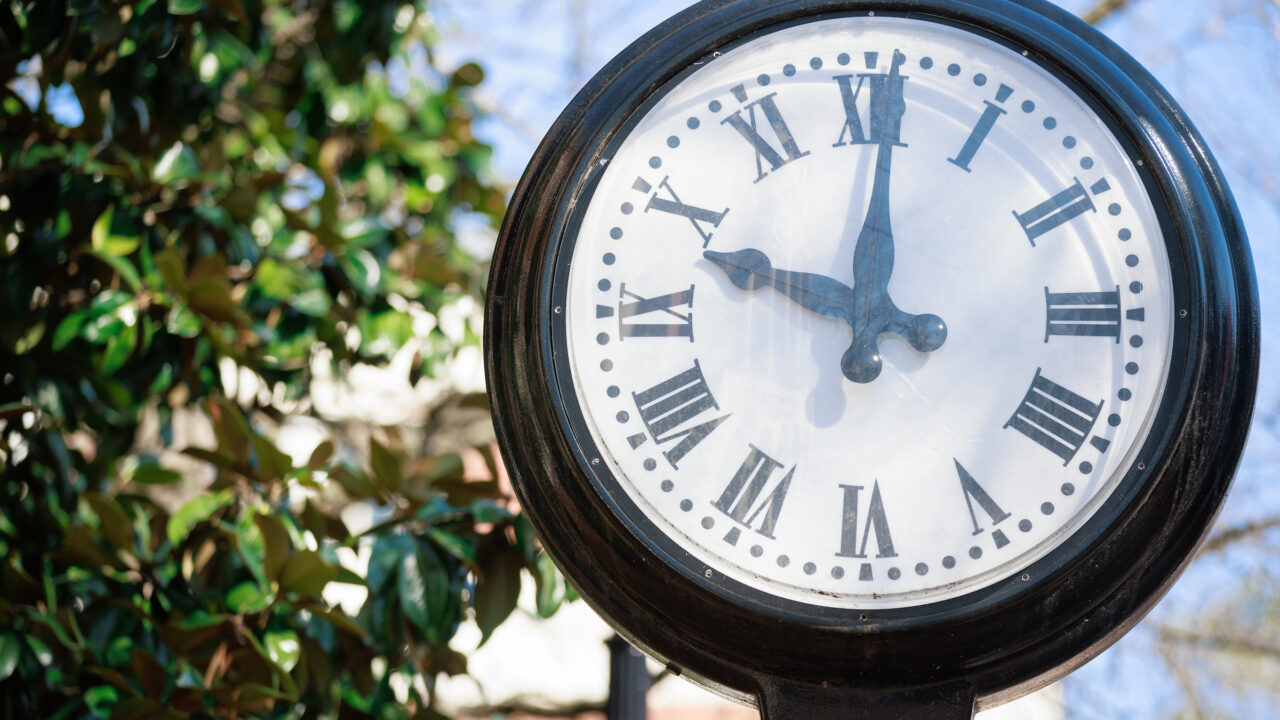Campus clocks spring forward one hour for Daylight Saving Time, but a 200-year-old grandfather clock needs a little more attention than the atomic clocks in a lab. There’s more to campus clocks than just marking time.
Oldest Campus Clocks
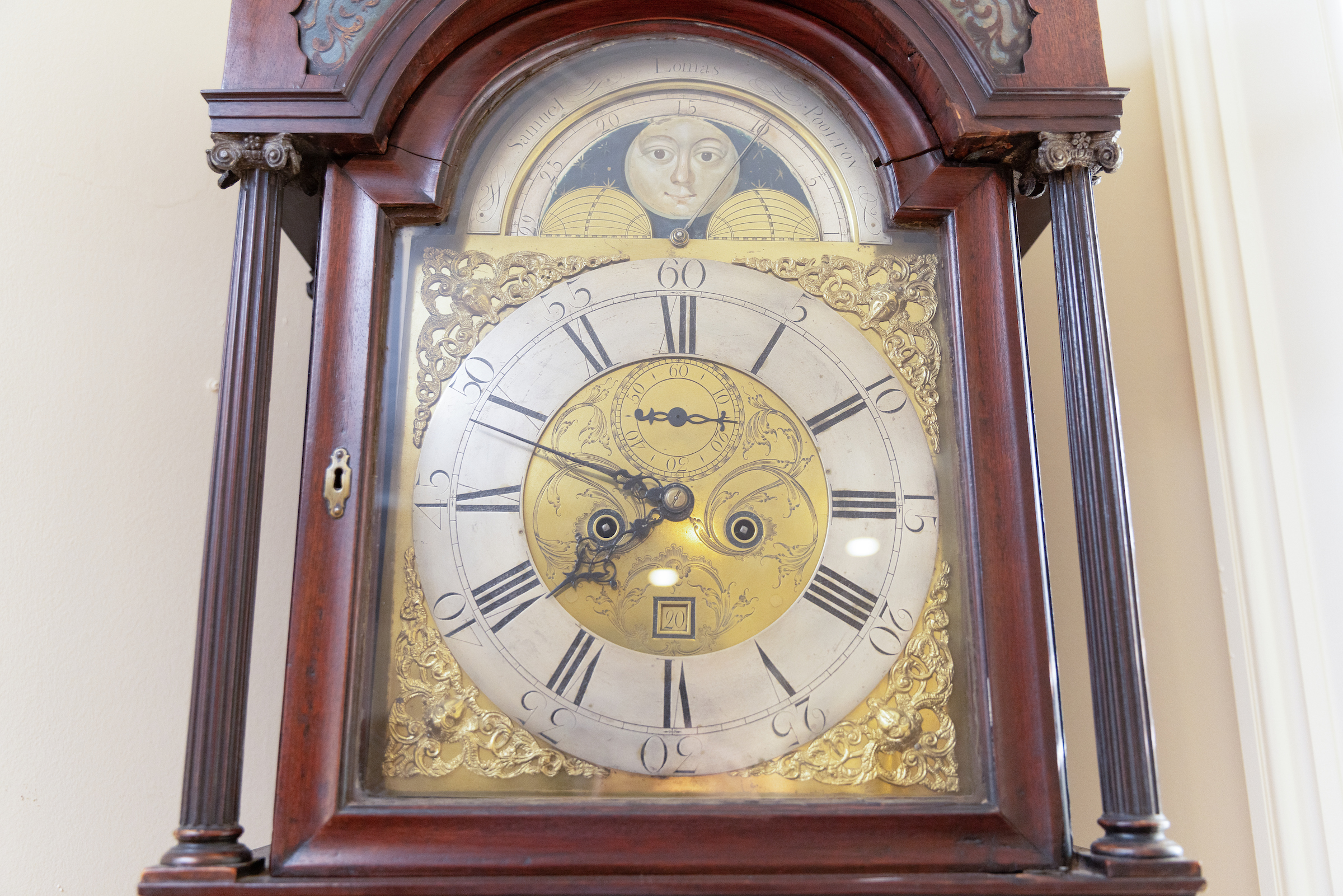
Gracing the UA President’s Mansion is a grandfather clock made between 1770 and 1780 in Liverpool, England. Its donor is known only as a Montgomery man with a large clock collection. This clock won’t spring forward in March. The chimes were so frequent and insistent it was allowed to wind down.
Jacob Gorgas, grandfather of Josiah Gorgas, the University’s eighth president, made The Gorgas House Museum grandfather clock. A clockmaker in Pennsylvania, Jacob created this clock during the late 18th century.
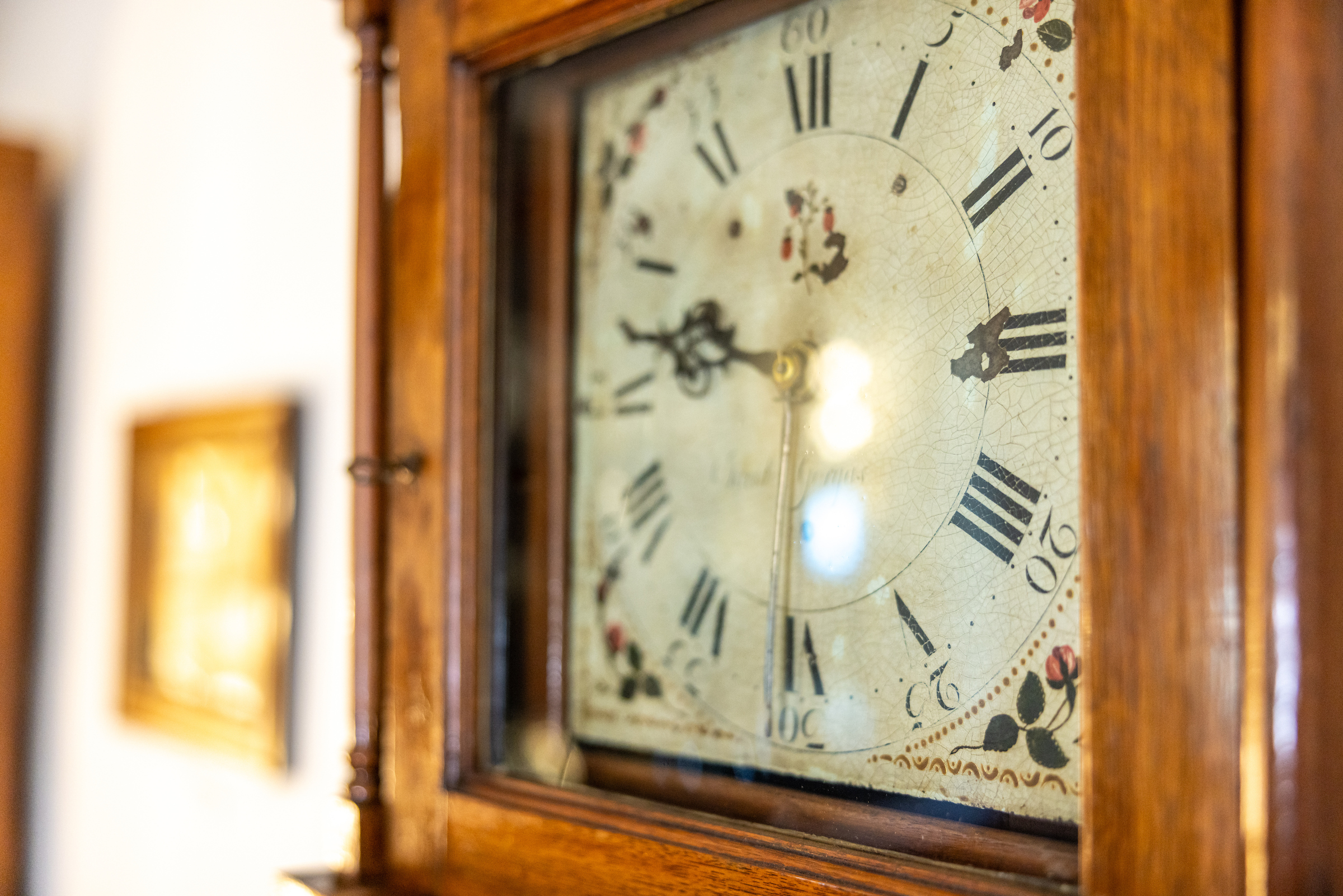
“The clock face is painted and has Jacob’s signature on it. It’s made out of a hardwood like oak or walnut while the gears are made of brass and similar metals,” said Dr. Brandon Thompson, museum director.
The clock does still chime every hour, and Thompson adjusts the time when needed.
Clocks as Landmarks
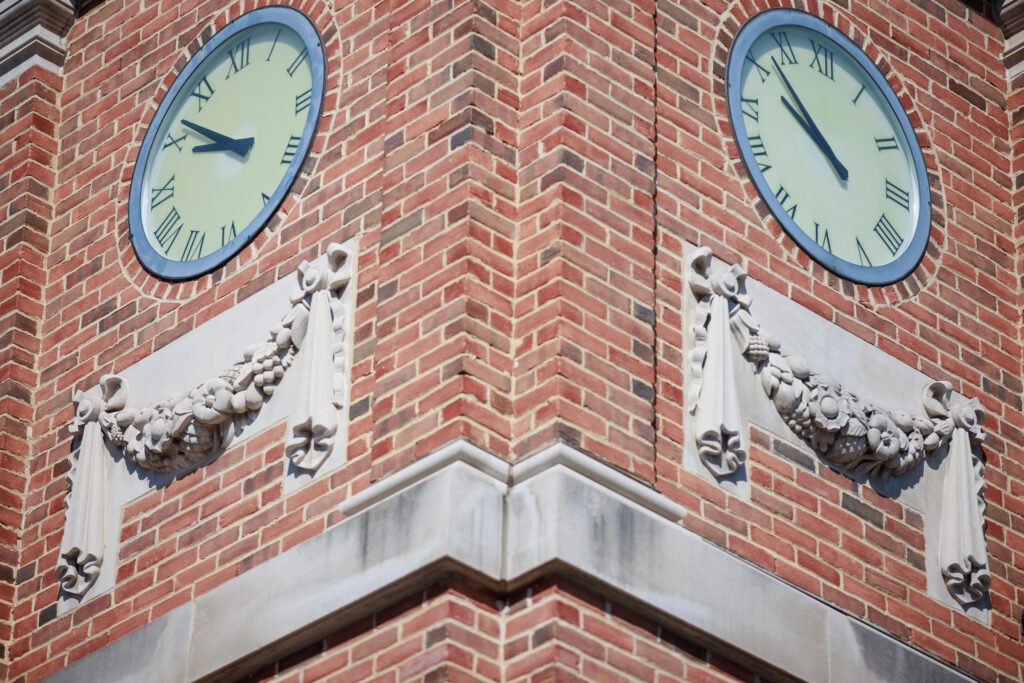
Springing forward to 2010 to the dedication of the Autherine Lucy Clock Tower along with the Malone-Hood Plaza at Foster Auditorium. The 40-foot-tall brick tower, with open arches and four large bronze plaques at its base, tells the story of Autherine Lucy Foster, James Hood and Vivian Malone Jones, trailblazers in desegregating the University.
Campus clocks, including those pictured here, should update automatically for Daylight Saving Time. Still, UA electricians check the clocks that Sunday morning and will manually update if needed, said Greg McKelvey, executive director of Facilities Operations.
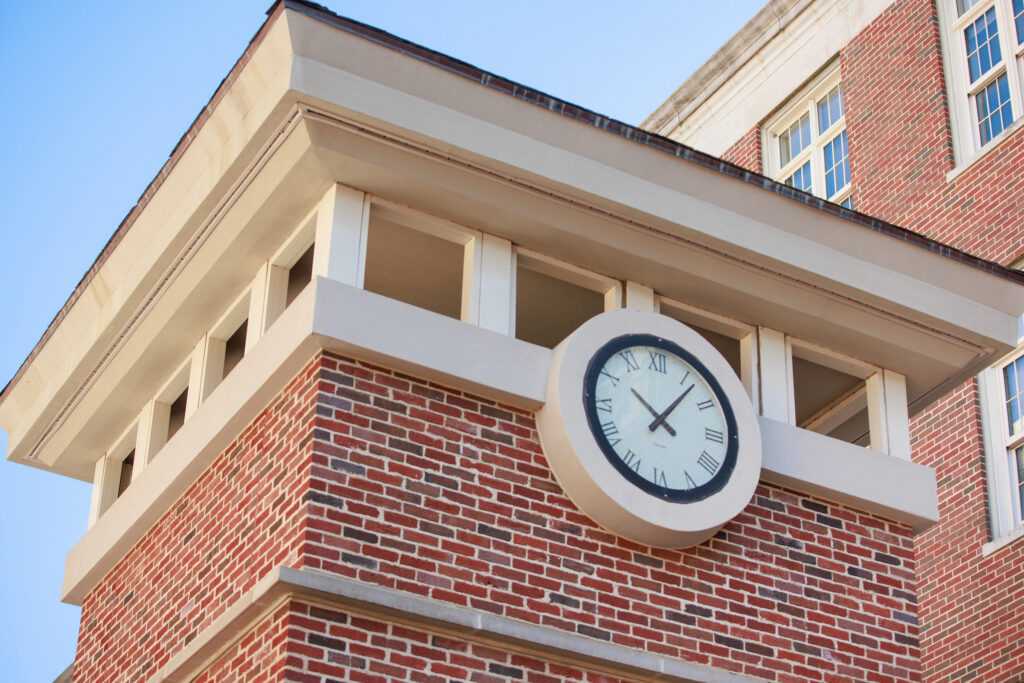
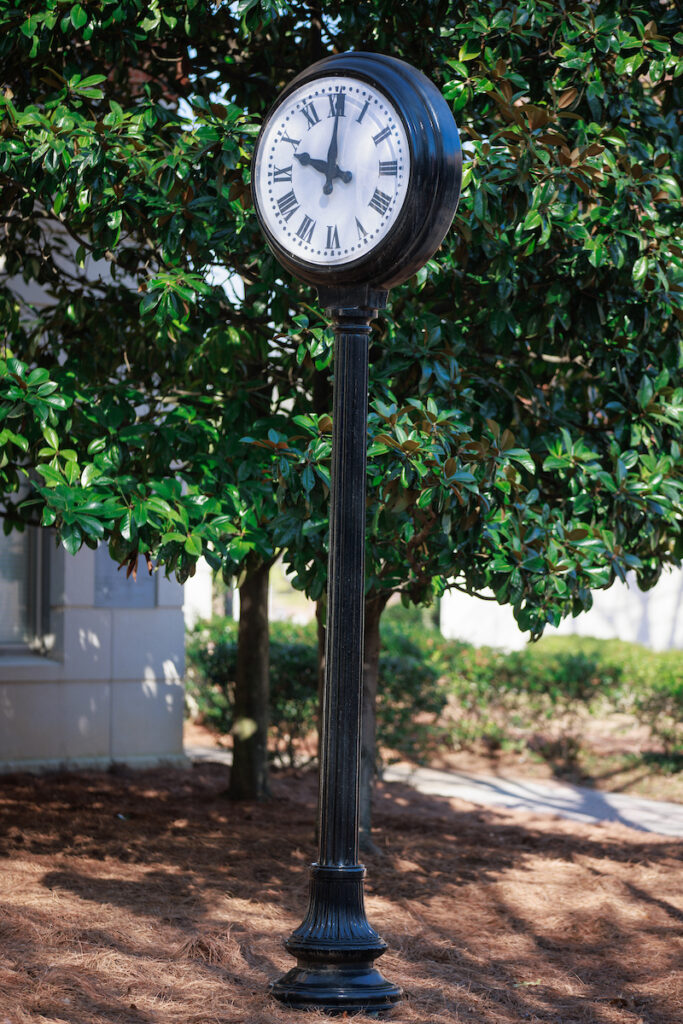
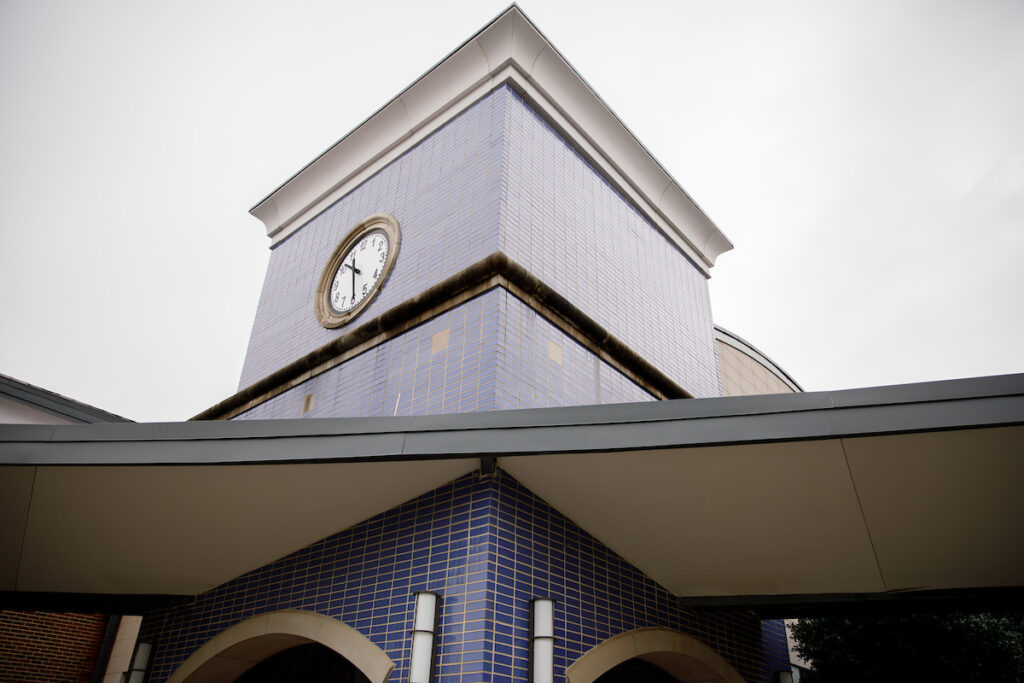
Atomic Clocks
Gallalee Hall houses UA’s most exquisitely accurate timepieces, the atomic clocks in the Precision Timing and Quantum Metrology Lab. Physics and astronomy faculty Drs. Patrick LeClair, Adam Hauser and Thejesh Bandi lead the effort to equip the next generation of precision-timing professionals.
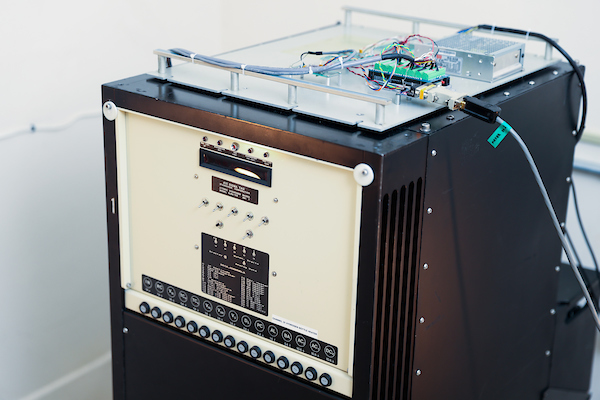
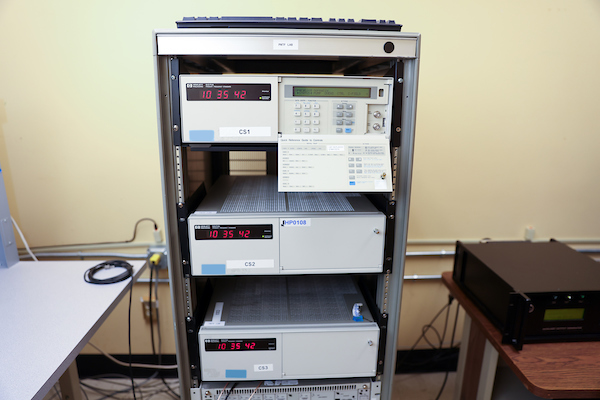
Honorable Mention: Denny Chimes
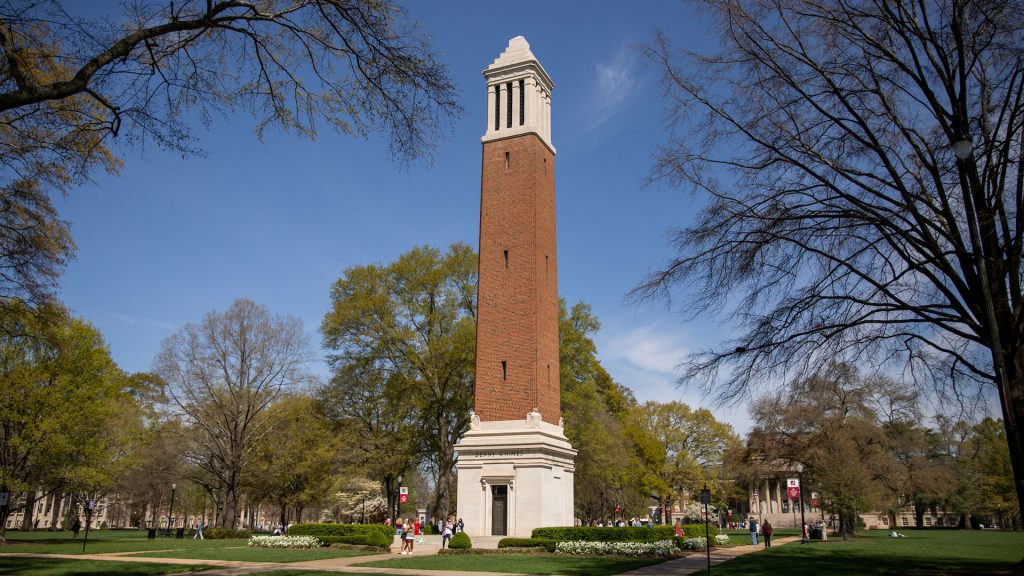
OK, it’s not a clock, but Denny Chimes has for decades marked the quarter hour, hour and noon. Therefore, it deserves at least an honorable mention in our time-keeping gallery.
